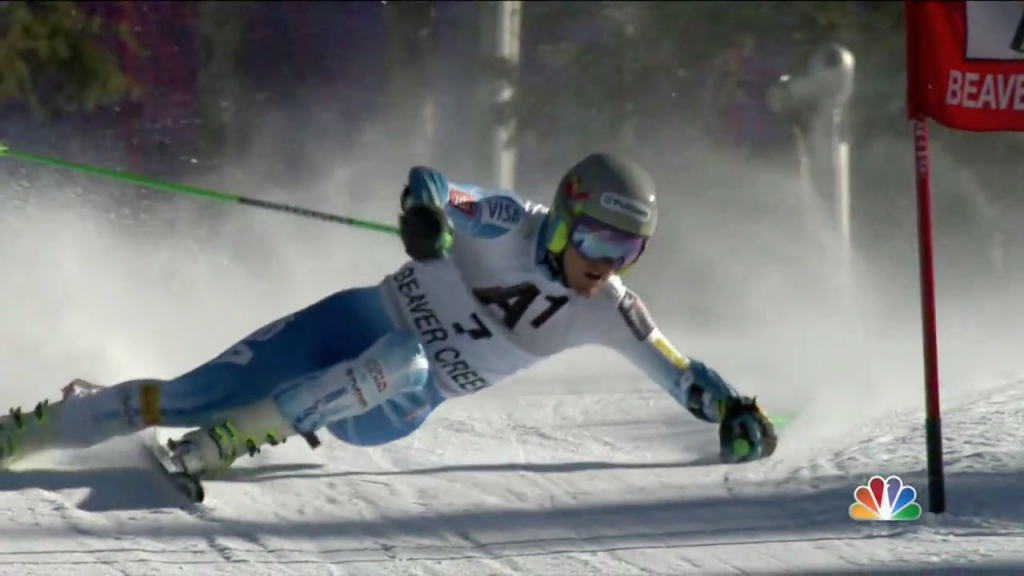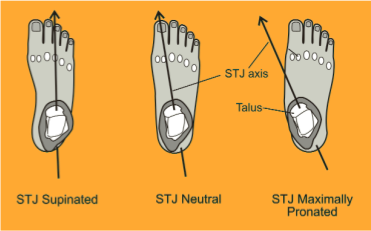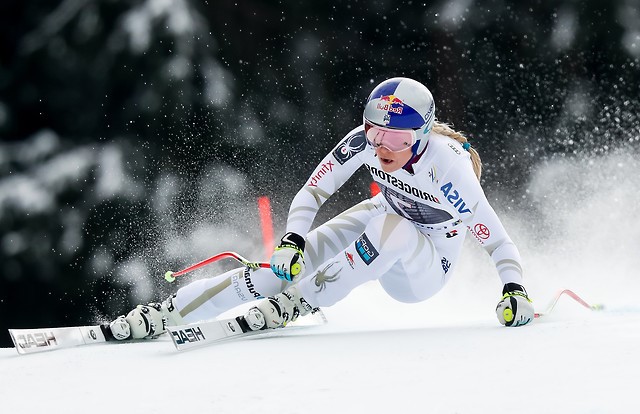All the girls succeeded in skiing well – using visible dynamics and trying to push off from the uphill edge of the uphill ski. This is made particularly evident due to the outside ski being used with active pressure smoothly from the start to the finish of each turn.
Hugo provides an excellent and valuable demonstration of exactly how not to ski – which he referred to as “normal” skiing! Only a few exercises later and with a little gentle persuasion Hugo had caught on and as a consequence was skiing parallel.
Side Slipping (Joystick Control)
- Feet close together
- Move centre of mass downhill slightly to side slip
- Also move centre of mass either forward or backward to diagonally side slip
- Side slip (with centre of mass) and plant a ski pole strongly downhill of the ski tails to block them from side slipping
- Maintain pressure on the ski pole as the ski tips continue to side slip into the fall line
- Skis horizontal across the hill require moving the centre of mass forward when the tips slide downhill – skier tries to anticipate remaining perpendicular to the slope – (same with both dynamics and pivot)
Pivot
- Skis also travel sideways – side slipping
- The ski turns more efficiently into a turn from its outside edge (compared to a stem and inside edge)
- Both feet must still have subtalar joints pronated and adductors and core activated
- This lateral movement requires solid pole planting (downhill) to control the centre of mass
- This is a braking form of skiing (fall-line skiing) – always on the uphill edges
Combining Dynamics and Pivot
- Dynamics depends of forward motion of the skis and lateral falling/pushing of the centre of mass
- Pivot depends on lateral motion of the skis – but always with the centre of mass being driven inward (toward the turn centre)
- The two can be combined – when there is both forward and lateral motion – making overall control of trajectory and speed totally under control of the skier
- The essential element to take from combining pivot and dynamics is to execute the turn transition from the uphill edge of the uphill ski – noting that the ski enters the new turn more easily than when on its inside edge and this also prevents stemming
Dynamics
- This is mainly about using the outside leg (start of new turn) to push the centre of mass into the centre of the new turn – for the whole duration of the turn
- Notice in the photos below the outside leg is essentially straight in a skating action and flexion for absorption and other purposes is at the hip joint (Skating related photos also below)
- The centre of mass goes down toward the snow – and to complete the turn it comes back up – like a motorbike in a turn

Feet
- Pronation of the subtalar joints of both feet simultaneously to place the feet on their inside edges
- Activation of the adductor muscles of the inner/upper legs
- Subtalar joint, adductor muscles, core all connected with tension when required
- This is for a solid support base for active dynamics/skating – so the ski is not pushed sideways and the centre of mass is moved inward instead


Images Comparing Skating with Skiing



